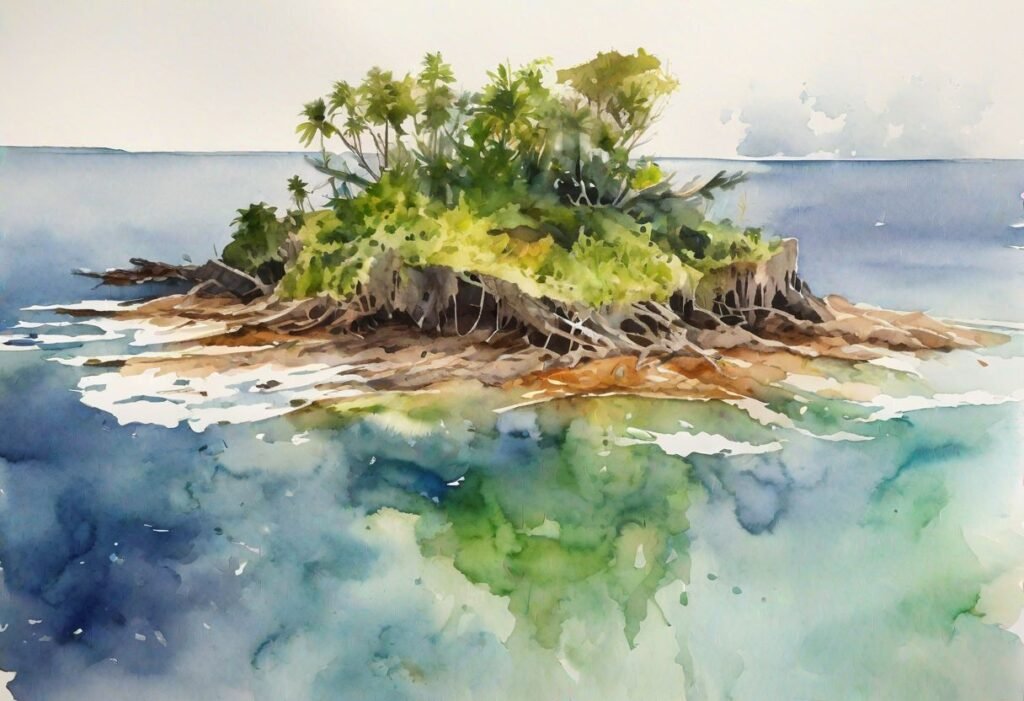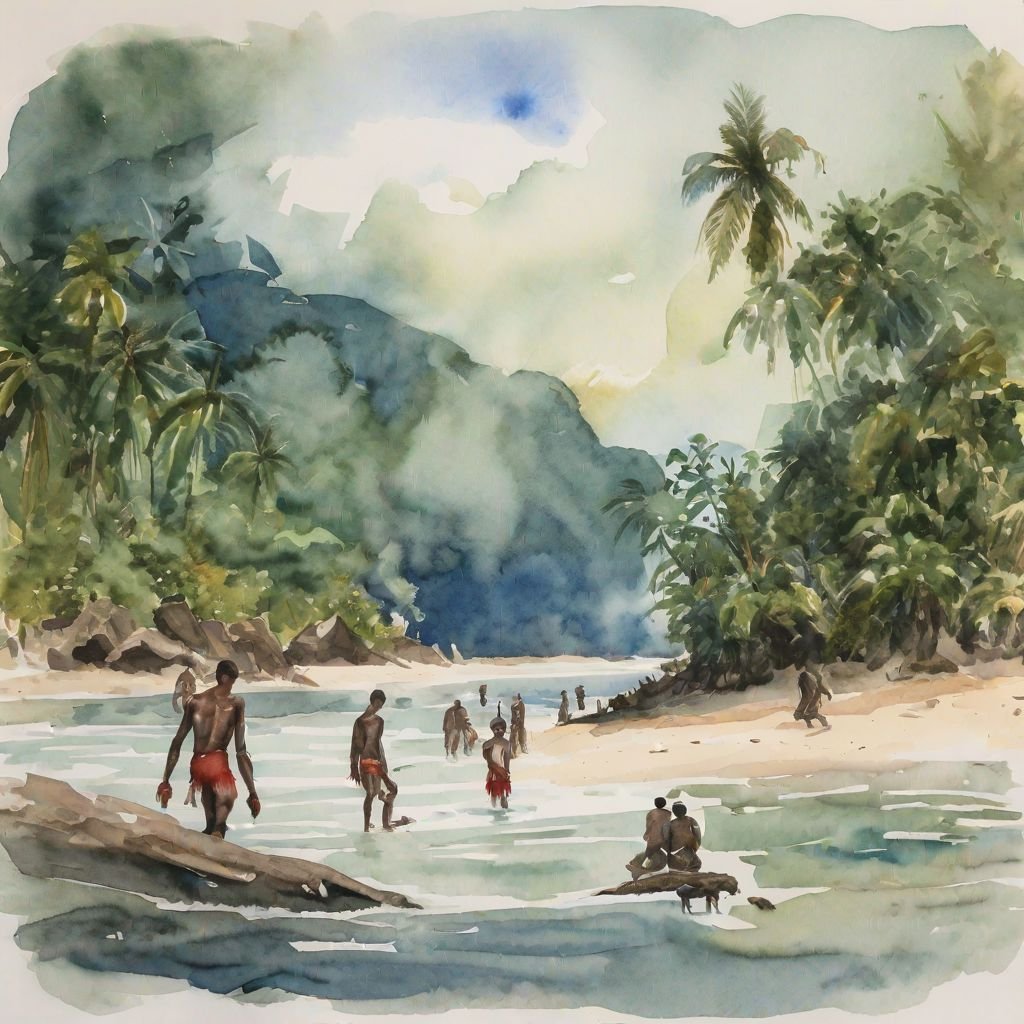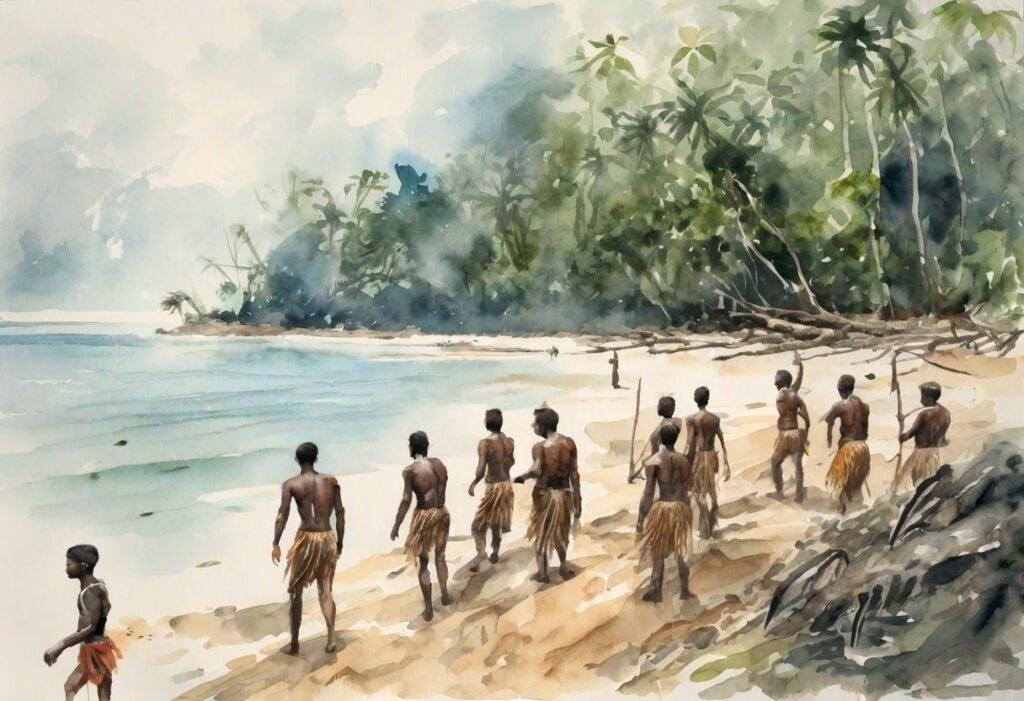Uninhabited islands scattered across the globe’s oceans hold a mysterious allure, offering us a glimpse into pristine natural environments untouched by the pervasive influence of human civilization. These islands, free from the trappings of modern life, provide unique insights into the resilience and complexity of nature, serving as both sanctuaries for wildlife and symbols of the untamed wilderness that still exists in our increasingly developed world. This essay explores the significance of uninhabited islands, their ecological importance, and the lessons they offer to humanity.
Sanctuaries of Biodiversity
Uninhabited islands are often hotspots of biodiversity, home to unique species of flora and fauna that have evolved in isolation. These islands act as natural laboratories, offering scientists the opportunity to study evolutionary processes and ecological dynamics free from human interference. The Galápagos Islands, for example, famously inspired Charles Darwin’s theory of evolution by natural selection, highlighting how uninhabited islands can fundamentally shape our understanding of life on Earth.
Moreover, many uninhabited islands serve as critical habitats for migratory birds, endangered species, and marine life. They offer breeding grounds, nesting sites, and shelters that are crucial for the survival of many species. The preservation of these islands is thus vital for maintaining global biodiversity and ensuring the continuation of countless natural processes.
Conservation Challenges and Opportunities
The isolation of uninhabited islands does not shield them from the impact of human activities. Plastic pollution, climate change, and invasive species pose significant threats to their ecosystems. Efforts to conserve these islands often involve complex logistical challenges, yet their preservation is essential for protecting rare species and sensitive habitats.
Conservation initiatives on uninhabited islands, such as eradication of invasive species and restoration of native vegetation, have demonstrated that human intervention can have positive outcomes. These projects underscore the importance of global cooperation and commitment to safeguarding natural treasures for future generations.

Some Facts about inhabited Islands
- There are an estimated 200,000 islands in the world, and of these, only about 8,000 are inhabited. This means that the vast majority of islands are uninhabited.
- Uninhabited islands can be found in all parts of the world, but they are most common in the Pacific Ocean. The Pacific Ocean is home to about 50,000 islands, of which only about 2,000 are inhabited.
- There are many reasons why an island might be uninhabited. Some islands are too small or remote to support human habitation. Others may have inhospitable climates or dangerous terrain. Still others may be uninhabited due to environmental factors, such as a lack of fresh water or arable land.
- Uninhabited islands can be home to a variety of plants and animals. Some islands are important breeding grounds for seabirds and other marine animals. Others may be home to unique plant and animal species that are found nowhere else in the world.
- Uninhabited islands are also important for scientific research. Scientists use uninhabited islands to study a variety of topics, including climate change, ocean acidification, and the impact of invasive species.
- Uninhabited islands are becoming increasingly popular tourist destinations. Tourists are drawn to uninhabited islands for their beauty, isolation, and sense of adventure.
Some examples of inhabtitated islands
- The most remote inhabited island in the world is Tristan da Cunha, which is located in the Atlantic Ocean, 2,800 miles (4,500 km) from the coast of Africa.
- The largest uninhabited island in the world is Devon Island, which is located in the Canadian Arctic Archipelago. Devon Island is 55,247 square kilometers (21,331 square miles) in size.
- The smallest uninhabited island in the world is Bishop Rock, which is located off the coast of Cornwall, England. Bishop Rock is only 0.0002 square kilometers (0.000077 square miles) in size.
Uninhabited islands are fascinating places that are full of beauty, mystery, and scientific importance. They are a reminder of the vastness of the world and the diversity of life on Earth. You can explore all the inhabitated Islands in our Database here – there is an own catergory.
Reflections on Human Impact and Responsibility
Uninhabited islands also serve as poignant reminders of humanity’s impact on the planet. They show us what the world might look like without our pervasive influence, offering a stark contrast to the environmental degradation witnessed in many inhabited areas. As such, these islands encourage reflection on our environmental responsibilities and the need for sustainable practices that respect the natural world.
In a world where untouched wilderness is increasingly rare, uninhabited islands stand as beacons of hope and resilience. They remind us of the beauty and complexity of nature, urging us to adopt a more conscientious approach to our interactions with the environment. As we strive to protect these isolated paradises, we are also protecting the intricate web of life that sustains our planet.
Some more fascinating uninhabitated islands
- North Sentinel Island, Andaman Islands, India – Home to the Sentinelese, one of the world’s last uncontacted peoples, this island is fiercely protected by its inhabitants against outsiders. Click to Explore this island.
- Malpelo Island, Colombia – A UNESCO World Heritage site located in the Pacific Ocean, Malpelo is renowned for its unique marine biodiversity, including large populations of sharks.
- Clipperton Island, Pacific Ocean – A remote coral atoll under French jurisdiction, known for its tragic history and now a site for scientific research, particularly in ecology and biology.
- Bouvet Island, South Atlantic Ocean – This Norwegian territory is considered the most remote island in the world, covered mostly by a glacier and home to a rich variety of marine birds. Click to Explore this island.
- Rockall, North Atlantic Ocean – A small, uninhabitable rocky islet claimed by the United Kingdom, noted for its extreme isolation and subject of territorial disputes.
- Kerguelen Islands, Indian Ocean – Often referred to as the “Desolation Islands” for their remote location, these islands are part of the French Southern and Antarctic Lands, with no permanent residents but visited by scientists. Click to Explore this island.
- Heard Island and McDonald Islands, Indian Ocean – Australian external territories, these islands are largely untouched by humans, known for their active volcanoes and as a UNESCO World Heritage site. Click to Explore this island.
- Socotra Rock, Yellow Sea – Lying between South Korean and Chinese waters, this submerged rock is known for its ecological importance and geopolitical significance. Click to Explore this island.
- Surtsey, Iceland – A volcanic island formed in the 1960s, it’s been protected since birth to allow for natural ecological succession, with access strictly limited to scientists.
- Aldabra Atoll, Seychelles – The world’s second-largest coral atoll, designated a UNESCO World Heritage site, is virtually untouched by humans and is home to the world’s largest population of giant tortoises. Click to Explore this island.
Rethinking Civilization Through North Sentinel Island
The mention of North Sentinel Island as an uninhabited island strikes a discordant note, challenging our perceptions of habitation, civilization, and the intrinsic value we assign to different forms of human existence. This oversight not only highlights the limitations of our perspective but also poses profound questions about the nature of our civilization and the self-importance we ascribe to it.
North Sentinel Island, home to the Sentinelese, stands as a poignant reminder of the world’s diversity in terms of human life and culture. The Sentinelese, by all accounts, have lived in isolation for thousands of years, thriving in their ecosystem without the interventions or advancements typically associated with modern civilization. To label such a place as “uninhabited” is to view the world through a lens that values certain types of human settlements and lifestyles over others, often equating technological advancement with superiority.
This perspective is deeply entrenched in the narrative of progress that has dominated much of human history, where the march of civilization is often measured by material achievements and the conquest of nature. However, this narrative fails to account for the myriad ways in which human beings can interact with their environment and each other, maintaining sustainable and fulfilling lives outside the parameters of industrial or technological advancement. The existence of the Sentinelese challenges the notion that our way of life, with its emphasis on technological progress and constant connectivity, is the pinnacle of human achievement.



Furthermore, our reaction to the existence of such isolated tribes—ranging from curiosity to the desire to contact or even integrate them into the global community—reveals much about our own insecurities and the value we place on conformity. There is an implicit assumption that our way of life is not only superior but also universally desirable, erasing the legitimacy and richness of alternative modes of human existence.
The Sentinelese, by their very presence, serve as a mirror to our civilization, reflecting back to us the limitations of our understanding and the arrogance of our attempts to measure all of human existence by our standards. Their resilience and determination to remain isolated, despite the immense pressures of an encroaching globalized world, speak to a profound strength and a deep understanding of their own way of life and its value.
In contemplating North Sentinel Island, we are compelled to confront the ethnocentrism that pervades much of our thinking about human societies. We are invited to expand our notion of what it means to inhabit a place—to live in harmony with one’s environment and to sustain a culture that is deeply interconnected with the natural world. It urges us to question the criteria by which we judge the success or failure of human societies and to consider the possibility that there may be many ways of “inhabiting” the world, each with its own intrinsic value.
Ultimately, the acknowledgment of North Sentinel Island as a vibrant, inhabited place challenges us to reconsider our place in the world and the narratives of superiority we construct about our civilization. It serves as a reminder that the diversity of human life is a testament to the richness of the human experience, offering us valuable lessons in humility, respect, and the myriad possibilities of human existence.
The uninhabited islands of the world are far more than just remote specks on the map. They are vital ecological sanctuaries, key to our understanding of natural processes, and poignant reminders of our impact on the Earth. Protecting these untouched islands is not just an act of conservation; it is a commitment to preserving the diversity and beauty of our planet for future explorations and discoveries.

